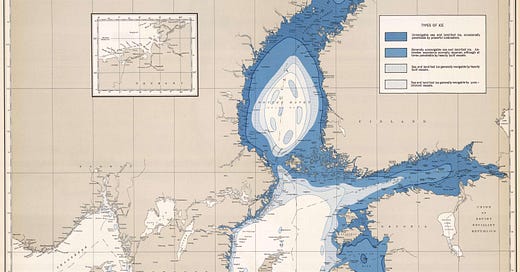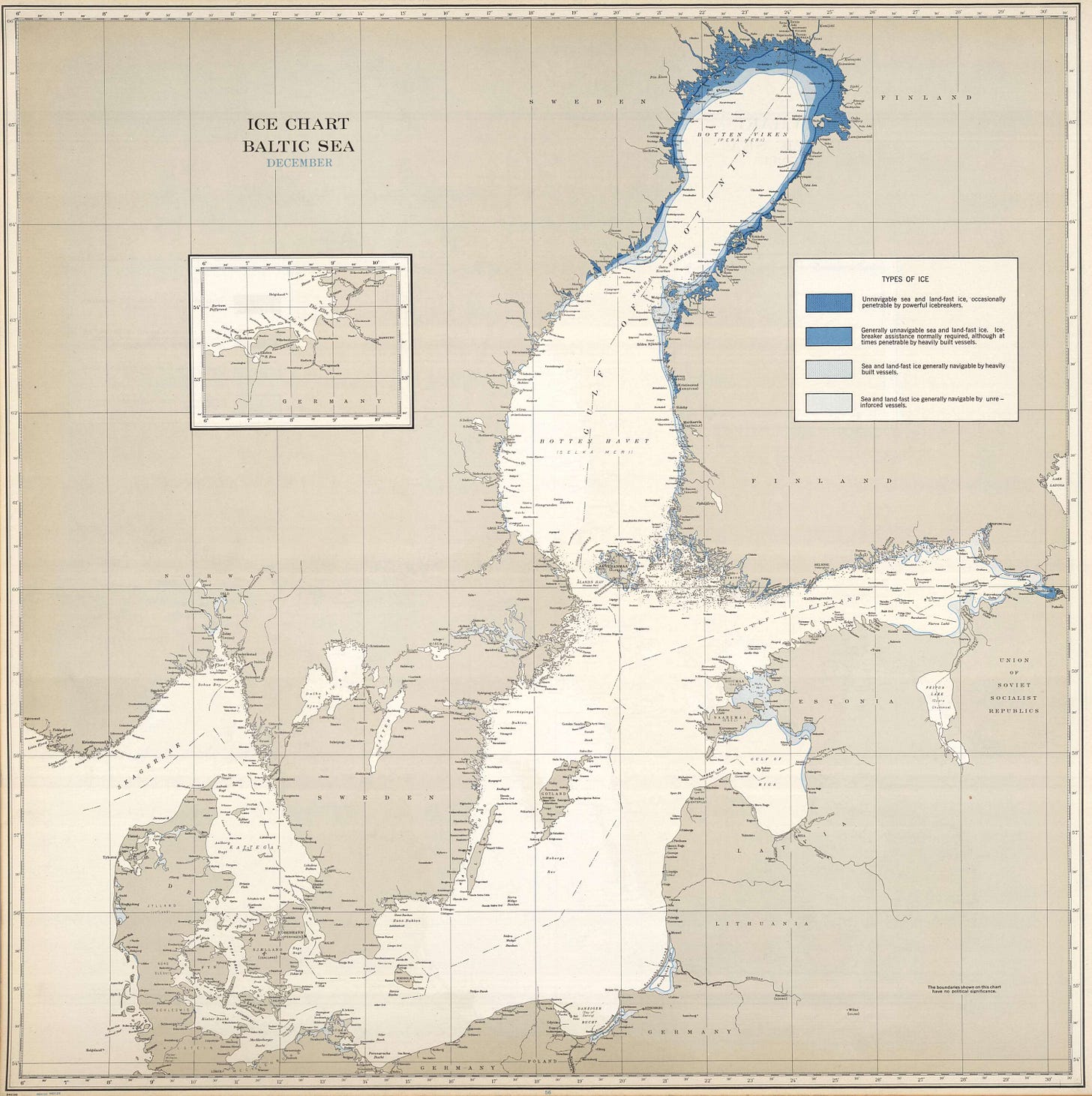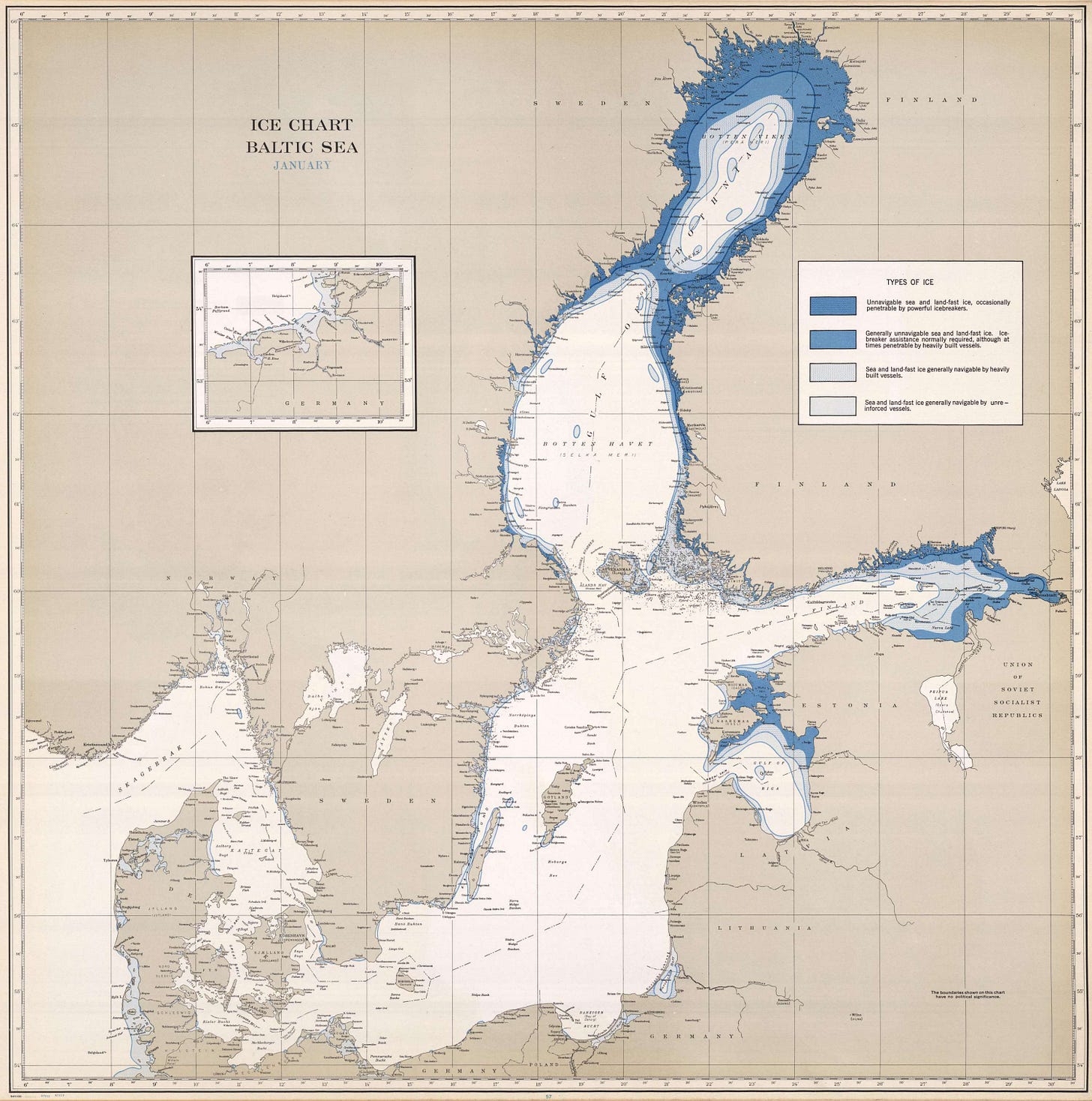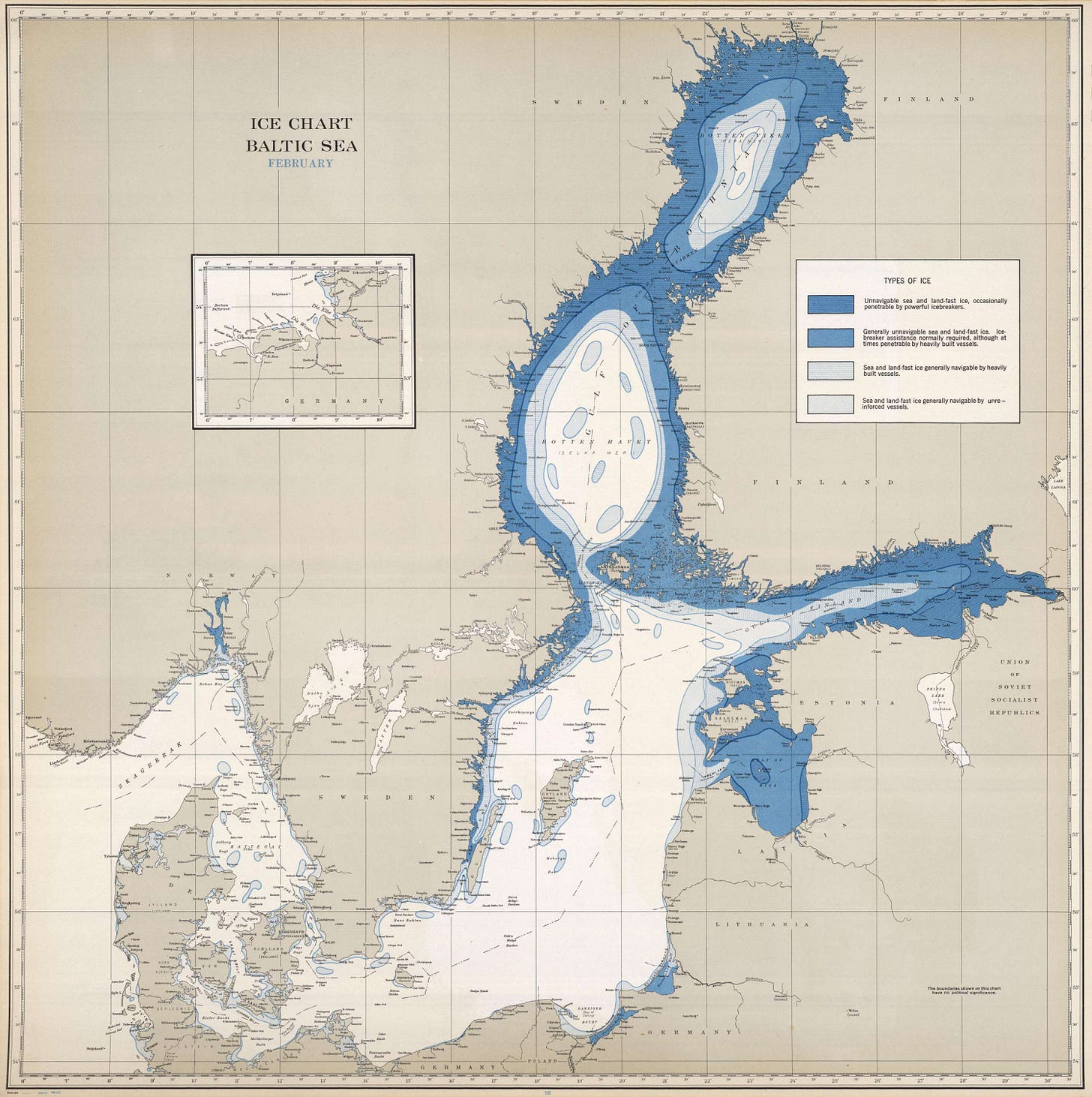Baltic ice and its advantages
The origin of the Baltic Sea, its freezing patterns and how the winter ice affects the region's towns and people.
Winter is cold. And the cold, for many, including myself, is unpleasant. Generally speaking, these are precisely the coldest weeks in the Northern Hemisphere. It's true that the days have been getting longer for a few weeks now, but that doesn't make up for the frost that falls every morning.
Apart from my complaints, this does not have any major consequences. On the days when the temperatures drop a little lower, in Segovia1, the council spreads salt on the streets to avoid ice patches and. Even so, you still have to be careful not to end up testing the hardness of the pavement. In other parts of the world, the challenges of ice are much more significant, forcing changes in the day-to-day dynamics.
Such is the case of the Baltic Sea, its coasts and its towns. They will be the protagonists of today's article.
The ice of the Baltic Sea
The Baltic, as we know it, is a young sea. During the last glaciation, which peaked 22,000 years ago, this entire region, like all of Northern Europe, was completely covered in ice. When the ice began to retreat, the Baltic glacial lake formed, occupying the southern region of the present Baltic Sea for over 6,000 years. The Baltic glacial lake then connected to the North Sea via Sweden and the Yoldia Sea was formed.
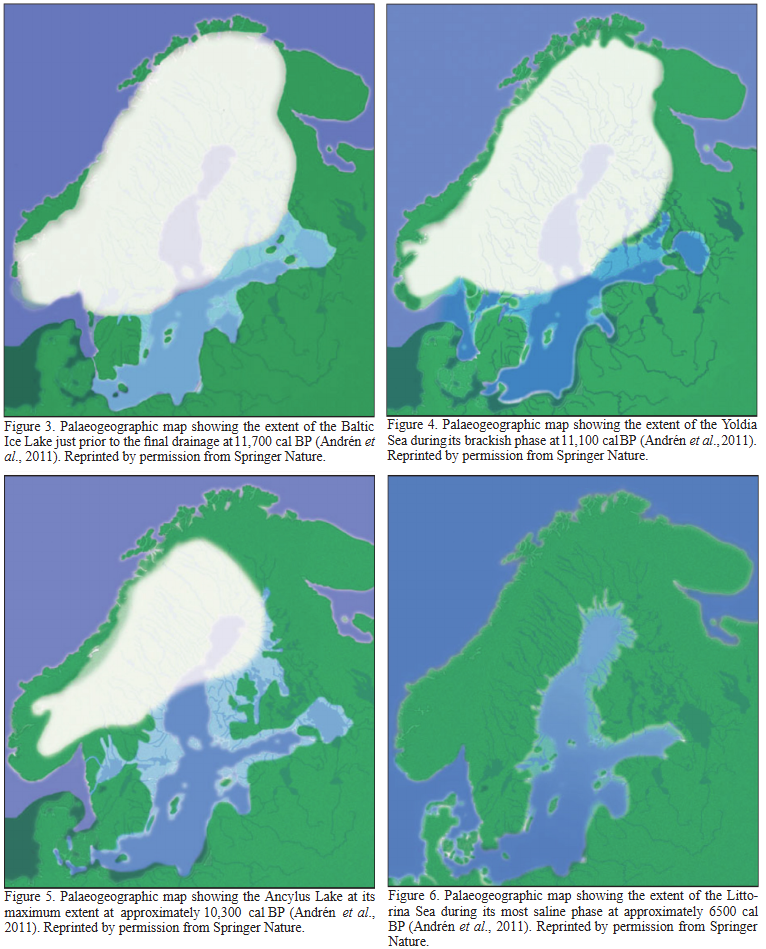
Just 600 years later, the Yoldia Sea closed again to form Ancylus Lake, which remained isolated for more than 1,500 years, until it finally connected with the North Sea once again. That was when the Baltic Sea took its current form, approximately 8,000 years ago. The origin of the Baltic Sea is similar to that of the Great Lakes, which is why it has an extraordinarily low salinity of around 8 grams per litre of water. By way of comparison, the salinity of the Mediterranean Sea is more than four times higher, at around 38 grams per litre of water.
This could be something irrelevant, but it is one of the reasons that makes it easier for the Baltic Sea to become partially ice-covered at this time of year. This peculiarity has meant that, throughout history, the peoples who inhabited its shores had to adapt to the harsh winter conditions. With a diet based on fishing and its seasonality, the inhabitants of the Baltic coast learned to stock up on food during the summer, and developed mechanisms to preserve it during the winter. This includes drying and salting fish, or even fermenting it, the star dish of the Baltic cuisine2.

People in the region inevitably had to adapt to the extreme climate. They established marked seasonal routines, with the use of boats in summer and the use of sleds in winter. They learned to fish on ice and also knew how to limit the manufacture of fishing equipment to the winter period when activity was much lower.
Understanding freezing patterns
Living with the Baltic ice, in addition to requiring adaptation to everyday life, also means facing the extraordinary situations that will occur year after year. In the Norwegian sagas, and replicated in the Anglo-Saxon poem Beowulf, there is a story of a battle that took place on the surface of the frozen lake Vänern. This event has been dated to around the year 530 and is considered semi-legendary, so many of the details may be exaggerations or mere inventions to give power to the narrative.
History has taken care to bring veracity to the part that focuses on the fight on the ice. During the Baltic Crusades in the 13th century, several clashes on the ice have been detailed. The first of importance, which has gone down in history as the Battle on the Ice, pitted the Teutonic Order against the Novgorod Republic on Lake Peipus. But for today's topic, much more interesting is the Battle of Karuse, in which Lithuania and the Livonian Order fought between the island of Muhu and the mainland, in the middle of the Baltic Sea.
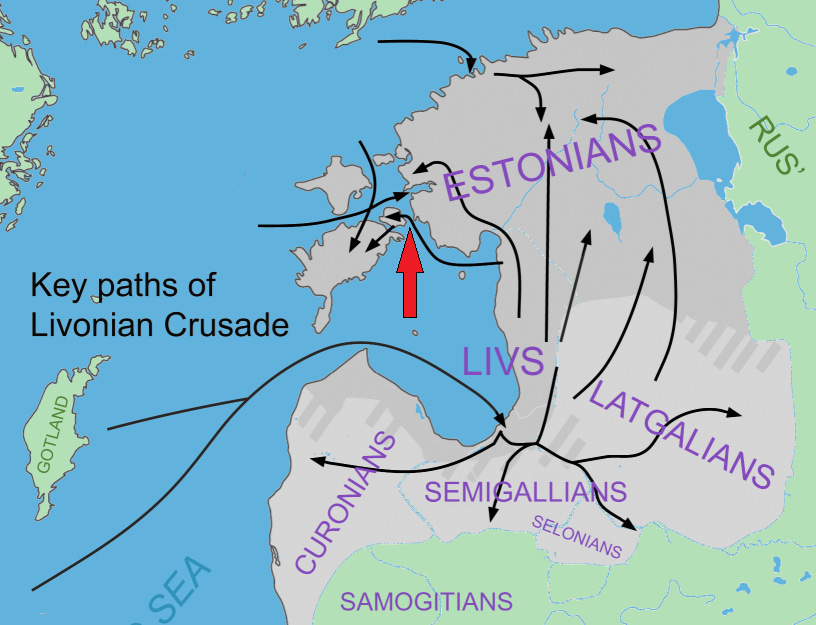
The Livonians and Lithuanians not only faced each other in the middle of the Baltic Sea, but in the weeks leading up to it, the Lithuanian army had marched from Riga to Saaremaa. Saaremaa is the largest island in Estonia, so getting there required crossing the Gulf of Riga, which was also completely frozen. This was only possible because the events took place during the winter of 1269 to 1270, when the ice sheet extended across the Gulf of Riga and was sufficiently consistent for an army to walk on it without it collapsing.
Every winter is different and, consequently, the extent of the ice over the Baltic also varies. The winters of 1808 and 1809 were particularly harsh, which was a determining factor in the Finnish War. Historical sources speak of an extraordinary layer of ice during the two years of war, which allowed the army of the Russian general Pyotr Bagration to cross the Gulf of Finland on foot. He was able to reach the Åland archipelago, in the middle of the Baltic Sea.
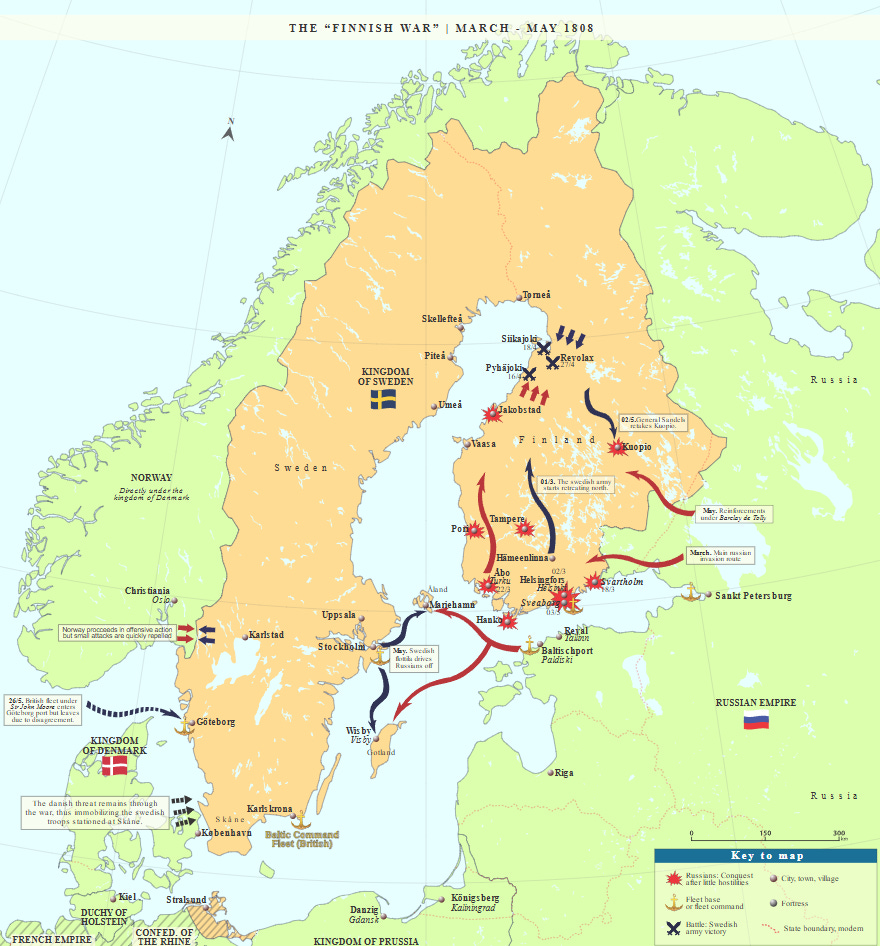
Another series of particularly harsh winters occurred at the beginning of the Second World War, when Finland defended itself against the invasion of the Soviet Union in the Winter War. The total freezing of the Vyborg Bay in March 1940 allowed Soviet troops to cross it from various points the day before the end of the war. This helped Finland to completely lose the Karelian Isthmus, including the city of Vyborg and its bay, during the signing of the peace treaty.
In total, it is estimated that the Baltic Sea has frozen over twenty times since 1720. The 400,000 km2 of water were completely covered in ice during those winters. The last of these took place in 1987, the region's harshest winter of the 20th century. By contrast, in 2008, hardly any ice formed in the whole of the Baltic, except for the southern coastal areas. But, if we ignore extreme situations, there are patterns that define the regions more easily prone to freezing and that change the dynamics of the sea.
The US army understood this perfectly after the Second World War and, for that reason, set out to study the behaviour of the Baltic ice. As a result, in 1946 they published an atlas with ten maps detailing the freezing pattern of the Baltic Sea from October to June3. At this link, you can consult all the monthly maps, although here I will leave you some of the most interesting ones to visualise the change.
That said, the maps, besides being informative, are truly beautiful.
These four maps detail perfectly the freezing pattern of the Baltic Sea. It begins to be noticeable in the month of December, and progressively increases until reaching its peak in the month of March, at which point it begins to melt. As happens in the mountains, even though the coldest month is February, the freezing continues to increase for another month. This pattern, also observed in mountains and polar regions, is because much more cold is required to build the first layers of ice than to maintain them or extend them slightly.
The Finnish Meteorological Institute currently maintains a website page where you can check the ice surface conditions over the northern Baltic Sea region every week and compare them with the usual situation. In 2025, compared to last year, there is much less ice overall at this date.
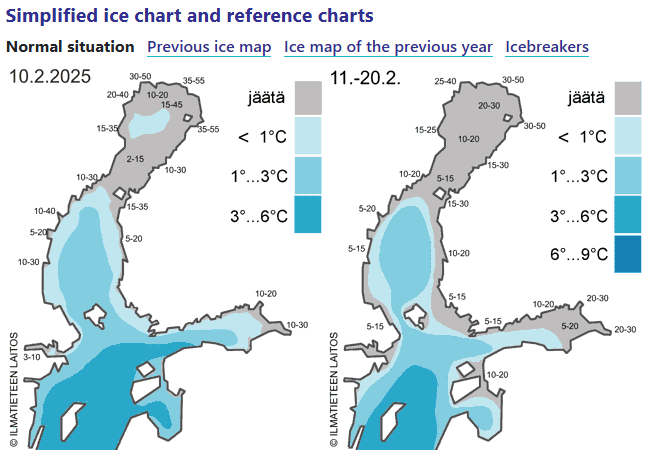
Transport on the ice
Every winter, the shores of the Baltic Sea are filled with cross-country skiers. Even if it is not a harsh winter, it is likely that a few metres of the coast will be completely covered in ice for the enjoyment of the locals. The main ports have icebreakers to facilitate maritime transport, at least when it is not the harshest months. But just as sledges were used for centuries, nowadays, there are also those who use cars to cross the Baltic waters.
Finland has many ice roads that are opened every winter to cross some of the many lakes scattered throughout the country. But the longest ice road in the whole country is opened almost every winter to link Hailuoto, the largest island in the Gulf of Bothnia, with the mainland. This section is part of regional road 816 which, for most of the year, is covered by a ferry, but in winter, it is replaced by cars travelling directly on the ice.
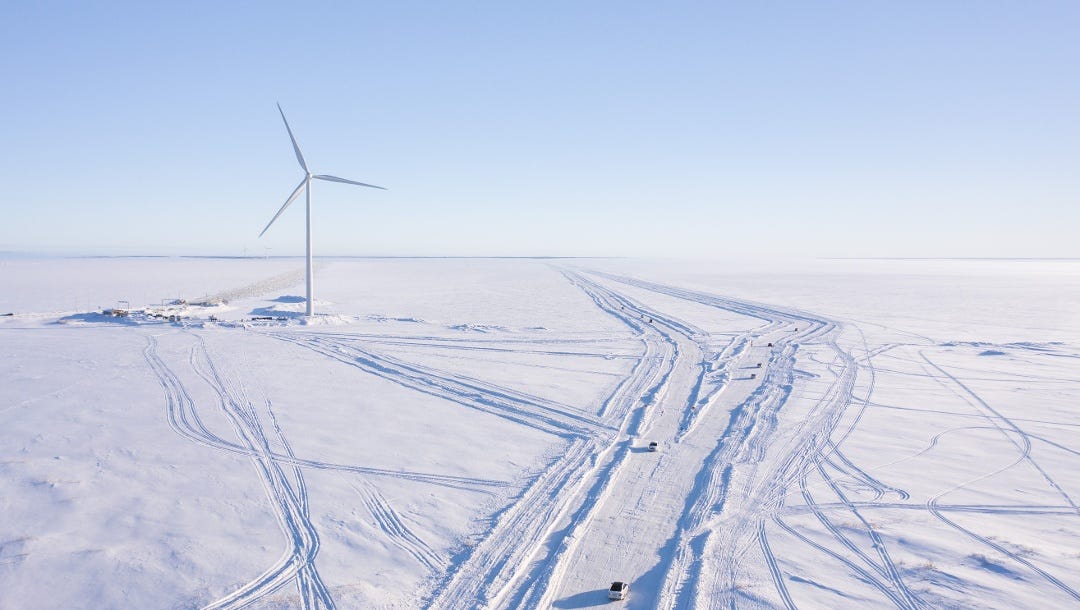
But if there is one country where the use of ice roads over the Baltic Sea is standardised, it is Estonia. In the same place where Lithuanians and Livonians fought more than 750 years ago, a network of six ice roads is established every winter, connecting the main islands of Estonia with the mainland. Or at least when the winter is cold enough for the layer of ice to be firm enough for vehicles to travel on it.
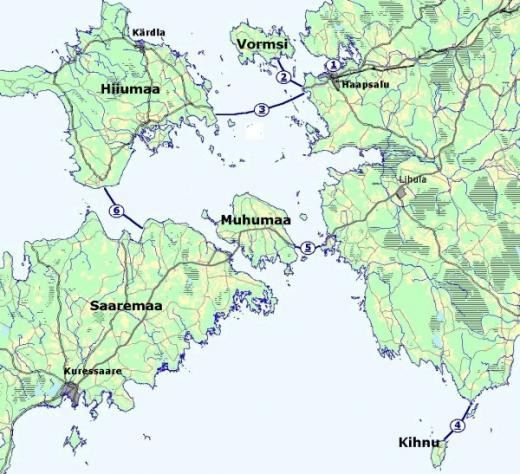
As surprising as the existence of these roads is the special traffic regulations that apply when drivers venture onto these routes. Driving on ice is not the same as driving on asphalt, so you have to adapt to the circumstances4:
Vehicle speed must be less than 25 km/h or between 40 and 70 km/h. If it is between 25 and 40 km/h, there is a risk that the car will resonate with the ice and break through it.
Wearing a seat belt or locking the doors is prohibited. Generally, there are no accidents, but in case there are, you have to make sure you can get out of the car as soon as possible.
You can't drive at night. Nor in stormy or foggy weather. Visibility must be good, as a vehicle's braking capacity is limited. What's more, sudden braking can also be a big problem for the stability of the ice on which you are travelling.
Considering all this, would you dare to walk or drive on the Baltic ice this winter? The roads don't usually open until the end of January, so you have time to think about it.
The town where I live, about 100 km Northwest of Madrid
The origin of fermented fish is currently placed in the south of Sweden, some 9,200 years ago. Long before the arrival of the Phoenicians and Romans.
The tenth map included in the atlas is a description of the region.
Here I leave you the complete regulations, which are very intriguing.


